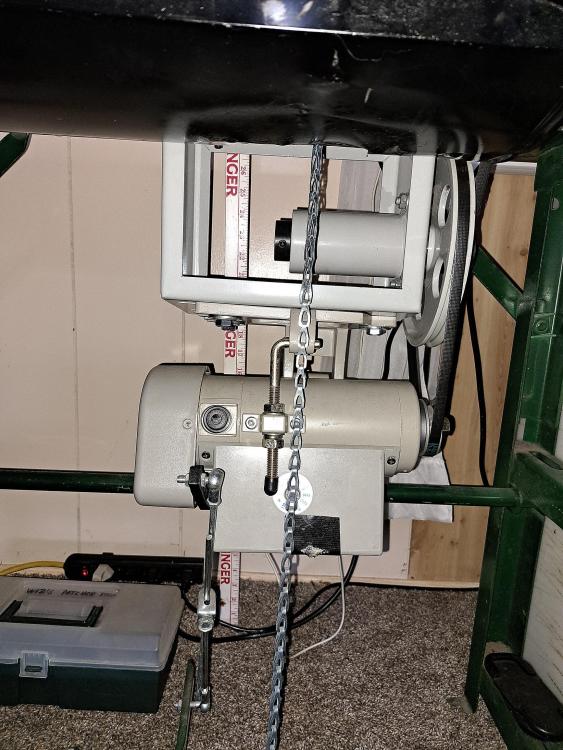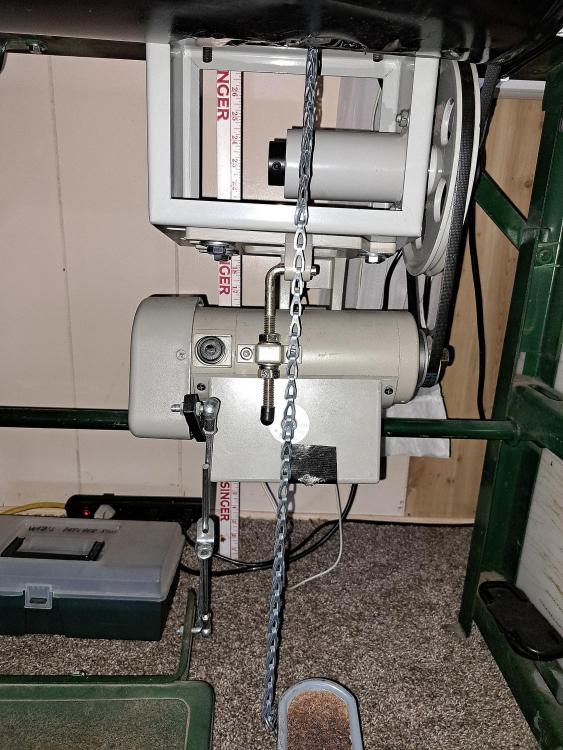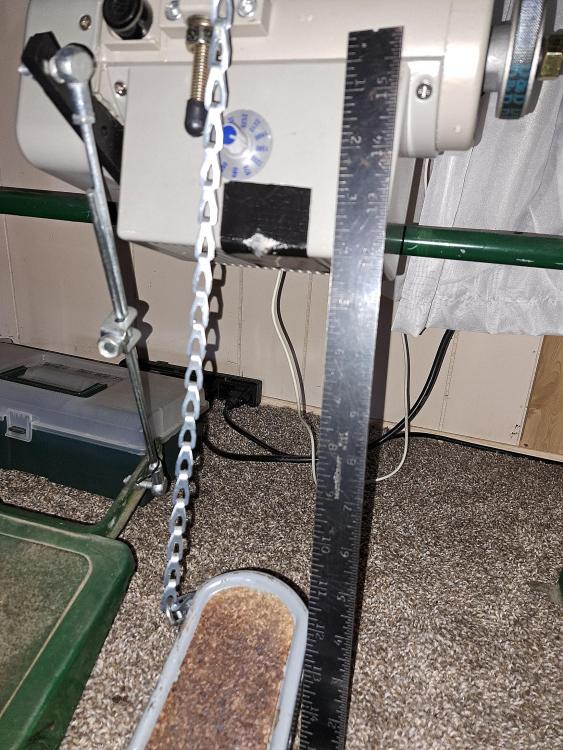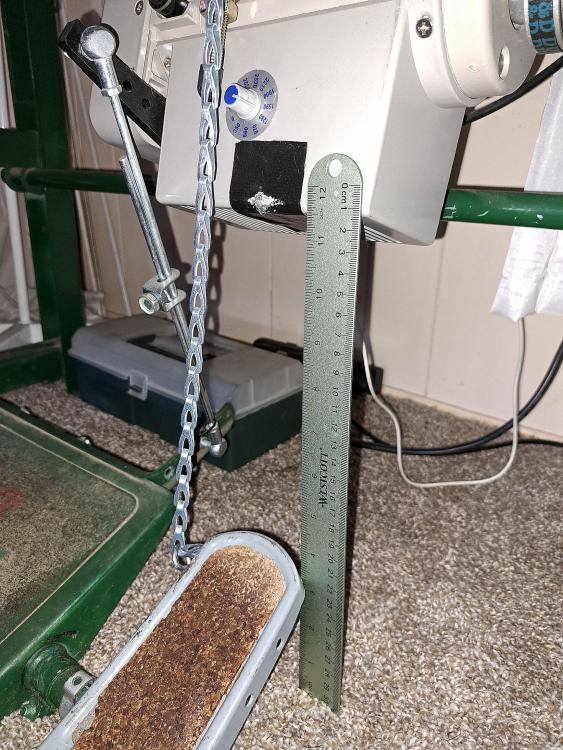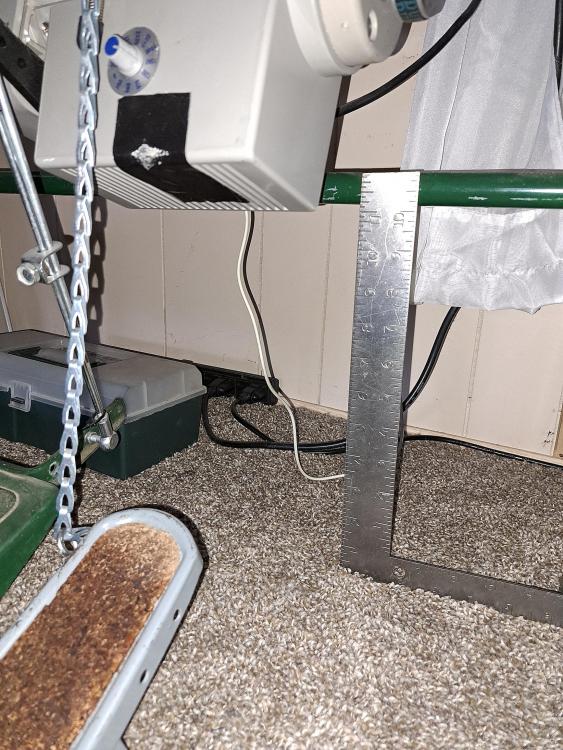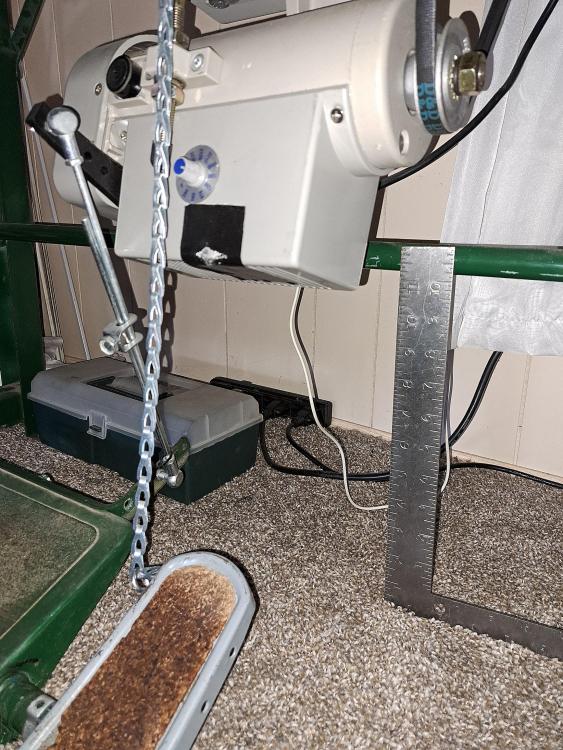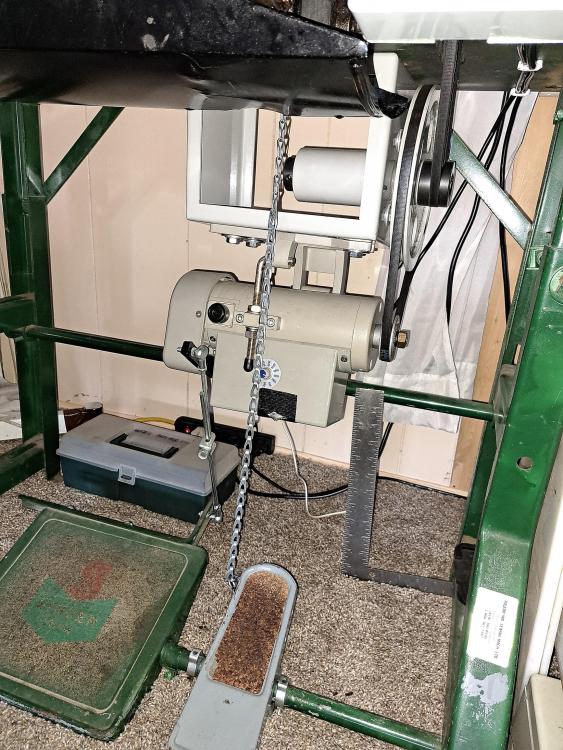-
Posts
7,765 -
Joined
-
Last visited
Content Type
Profiles
Forums
Events
Blogs
Gallery
Everything posted by Wizcrafts
-
I posted an article in the Wanted section of our forum, warning about forum scammers targeting our members. The same information applies to people posting items for sale. I urge you all to read the warnings and familiarize yourselves with some of their tricks and names they commonly use to scam our members.
-
I posted a lengthy article in our Wanted section, detailing some of the techniques and usernames/email accounts frequently used by forum scammers on Leatherworker.net. While that article was written with the items wanted forum in mind, the exact same warnings and tips apply to the items for sale forums. If you have posted something for sale in any of our Marketplace forums, please take a few minutes to read my post. It might save you hundreds of dollars if you get taken in by one of these seasoned professional con men.
-
It has come to our attention that some overseas scammers have been responding to posts in the Wanted forum on Leatherworker.net. This is a matter of concern because it involves financial loss by some of our members. Here's how the scam works. A member of the forum creates a post stating the are looking to buy a particular item that other members may be willing to part with. Sometime later, a new member responds stating that they or their friend has that very item for sale. They post an email address to contact them, or the friend who has the item. They may also use our private message system and invite you to send them a message if you are interested. This is how buying and selling usually works. So, what makes this a scam? It may or may not be a scam, but, there are telltale signs that it is. They include, but are not limited to the following things to look out for before you respond. The person replying is a new member with only one, or a few posts, and all are in response to posts for items wanted. They list an email address that contains the words "mask" and/or "luca." at gmail, or another freemail service. Example: maskluca9@gmail.com. They have the email address: lupodsblumqt2267@gmail.com They mention a friend you should contact that contains the name "cherry," or "padcherry," , or the email address: padcherry98@gmail.com They may post a photo of the item they claim to have. If you look closely it turns out to be a stock photo from a dealer's website, or even from a previous ad from another member who was selling it previously. If you ask for close-ups and different views, they can't provide them in a timely manner. This is because they don't actually possess the item. They ask for payment via Western Union, Bitcoin, or prepaid money cards (aka: gift cards). These types of payment cannot be traced to the person cashing them out. Your money is irreversibly gone if you pay with any service like these. The scammers sign up under various aliases, but will usually list a location in the same country you live in when they reply to your post. For instance, the last one I terminated listed his address in Texas, in the USA. But, his normally hidden IP address showed otherwise. This is not normal. Since only moderators can see the IP addresses of posters, I encourage you to notify a moderator is you receive a suspicious reply to a post for an item for sale or an item wanted. The sooner we learn about forum scammers, the sooner we can block them from posting here.
-
No, that alignment is not right. Was the needle centered with the original feed dog and throat plate? What brand is the sewing machine? FYI: I have this narrow feed dog on my Cowboy CB4500 and my needle goes dead center through the slot in the feed dog.
-
I was hired to adjust a ULS machine down in Roseville, Michigan, a couple years ago. It was a like new, rebuilt machine from Campbell-Randall. It was factory equipped with a servo motor. The motor was very powerful and geared way down. But, if had no free play between off and on. It was always in the drive chain when the pedal was heel down and it was very hard to turn the balance wheel manually (because the motor was fighting the wheel). If you do fit a servo motor to your ULS, choose one that has an adjustable or removable brake pad. You usually need to hand wheel around turns, or spin-arounds, or to place the awl into a previous hole.
-
I believe that Weaver Leather sells belt edge painting machines. I know they sell a double sided edge beveler machine that can bevel either the top, or bottom, or both, on the left and right.
-

Singer 29-4 Needle Plate / Threading
Wizcrafts replied to shoeleatherexpress's topic in Leather Sewing Machines
About 1.75 inches. Originally, Singer produced System 29x3 and x4 needles for the patchers. Those are obsolete now. Use System 135x16 leather point, or 135x17 round point. The only difference is that modern needles have a cutout scarf over the eye on one side. -

Singer 29-4 Needle Plate / Threading
Wizcrafts replied to shoeleatherexpress's topic in Leather Sewing Machines
When you load a new bobbin into the shuttle, push the thread up through the hole before you start sewing. Leaving the long bobbin thread tail under the plate invites getting it jammed under the shuttle. -

Singer 29-4 Needle Plate / Threading
Wizcrafts replied to shoeleatherexpress's topic in Leather Sewing Machines
There are always two holes on each end of the patcher needle plate. The centered hole closest to the edge is for the needle and bobbin thread. The offset holes are for the spring loaded stud that locks the plate in position. So, yes, bring the bobbin thread up through the needle hole. If you don't, the needle will bring it up when you begin sewing. -
All my edge guide feet have a two direction torsion spring mounted over a screw. The spring pushes down on the edge guide.
-
Read this post to learn how to resize your photos so they are under our limits. You can also try emailing the photos to yourself. Many mail servers are are set to reduce image sizes during delivery, including Gmail. Failing that, you can try compressing the photos by zipping them inside a zip file, using 7Zip, or Winzip. But, if you can access a graphics program that allows you to save at a lesser quality, and/or overall dimensions, use it. Check your camera, or phone camera to see what the smallest resolution is and retake the photos at that resolution. My Samsung A53 allows me to shoot as low as 1:1, or 3x4. These produce very small file sizes in comparison to 9x16 or full screen.
-

Material Guides on Juki 441 and Adler 205?
Wizcrafts replied to Cumberland Highpower's topic in Leather Sewing Machines
Weaver probably has some swing-away edge guides for the bigger Adler machines they sell in their industrial division. That includes the Adler 205-374 and probably its successor, the 969 ECO. I would check with @CowboyBob to see if he has one that will fit your machine, or the machine you're thinking about buying. If you buy a Cobra or Cowboy, the swing-away edge guide will be an option that will ship with the machine. My CB4500 also has a drop-down edge guide that is easier to use, because it flips up out of the way when not needed. The swing edge guide is normally attached to a T-bar mounting bracket, and is always in the way on the right side of the bracket, unless you loosen the bolt and pull it off. -
I use edge guide presser feet on my walking foot machines that take Singer 111 type feet. I have them from 1/8 to 3/8 inch from the edge guide to the needle. I leave the inside foot on and just change the outside presser foot to whatever configuration I need. The edge guides are really good as long as you have a straight edge to follow. It gets a little dicey if there is a slope, or a thin edge. They have a problem on inside curves unless the radius is large, like on a vest armhole..
-

Material Guides on Juki 441 and Adler 205?
Wizcrafts replied to Cumberland Highpower's topic in Leather Sewing Machines
This swing-away edge guide looks like the one mounted to my Cowboy CB4500. It also resembles a Union Lockstitch edge guide. You can buy the Cowboy edge guide from Toledo Industrial Sewing Machines. The ULS edge guide is available from Campbell Randall Company, in Texas. -

Questions re: DIY box style speed reducer
Wizcrafts replied to shelr1's topic in Leather Sewing Machines
Disable any ad or script blockers you have running. If you are using a computer to manage the forum, but the photos are on your phone, and the phone is plugged into a USB port to open its files, download the photos to a folder on your computer, then upload them to the forum. I often run into this problem when I try to upload photos that are still on the phone, while using my computer. If you are going directly from the phone to the forum, and the filesizes are under the limits, try sending just one photo. If successful, add another after the first one appears in your post. You should have enough time to edit the post several times. -
Something has come loose on its shaft. Check every setscrew the attaches the balance wheel to the main shaft and onward. There shouldn't be more than a gazillionth of a parsec of free motion.
-
Before you take the revolving head off, check the feed motion cam for slack motion. Do this by pushing and pulling on the raised foot with the stitch regulator set all the way down until it touches the top of the foot. Every measurable amount of slack motion translates into lost maximum stitch length. You ancient feed motion cam may or may not be replaceable. If it isn't, you can bronze braze onto the puck shape to build up its diameter, then file, or grind, or sand it down for the best fit without binding as you rotate the butterfly handles. The maximum length will be 5 to the inch. There's no better time to rebuild or replace it than when the head is off the machine anyway.
-
Try reducing the pressure screw on the presser foot and see if it is easier to turn the balance wheel.
-
You're gonna wish you hadn't broken that spring. First, remove the presser foot and stitch length regulator assembly. Next, unscrew the needle clamp and needle. The easy part is now over. Get a drift punch with a 1/8 inch round shaft (flat face), and a fairly small inside diameter socket wrench socket. Have someone hold the socket over the stud that connects the needle bar to the take-up piston. Place the drift punch against the back side of the tapered stud and use a mallet to drive it out, from the back to the front. The socket should hold the stud after you drive it all the way out with the drift punch. The needle bar will drop against the needle plate. See if you can pull the loose needle bar up and out of its housing, past the take-up rack. You have to rotate the hand wheel to raise the rack to its top-most position. If you're lucky, the bar will come out the top and you can set it aside and proceed. Otherwise, read the next paragraph. Loosen and remove the flat pressure spring from the back of the machine. Next, use a long flat blade screwdriver to remove the four screws that hold the entire rounded revolving head housing to the left side of the body. When the last screw is removed, pull the head away from the edge until the needle bar falls into your hand. Set the needle bar on some cloths and clean the oil and grit off of it. Then examine the two tiny screws that are securing the top of the paddle spring to the indent in the needle bar. If you see the slots and can get a tiny screwdriver blade into them, unscrew the screws and set them aside away from each other. Set the one on the right in a cup or jar on your right and the left screw in a jar on your left. I promise you that it is easier to reuse these screws than to install new ones. Remove the broken spring. Clean the channel under it and look to see if the thread has gouged a channel in the steel. If so, use Emory cloth, or a narrow file to smooth out the steel and remove the gouge. blow out any filings, then place a new spring in position. Insert the original screws into their original holes and tighten them down, making sure that the spring makes firm contact with the flat steel under it and isn't twisted out of the narrow channel it fits into. Oil the needle bar and reinstall in in reverse order. When you reattach the tapered stud at the top, place the socket on the back and drive it in from the front. Should you be unable to remove the tiny screws and remove the paddle spring, buy a replacement needle bar. Try to find one that has the spring on it. If the existing right side screw can't be reinstalled, you'll have to get a replacement and install it. Then, you have to file it down on the right edge to prevent it from gouging the inside of the needle bar channel in the revolving head. If you replace the left screw, it too may need to be files down a little to clear the housing. When you're done, refer back to my opening sentence. If you need parts, contact @CowboyBob, or @shoepatcher. Good luck!
-
I am a professional patch sewer. Bikers bring or ship their vests to me and include embroidered patches they want me to sew on, along with a photo of the patches in place, or by taping or pinning them in place. They have their patches sewn at embroidery shops. Have you considered simply working with an embroiderer to have your designs digitized, then sewn onto a leather vest? Yes, the patches will cost actual money. But, those designs can be stored and repeated if others want a similar patch job. If you really want to hand tool a vest, you'll need to construct it of vegetable tanned carving leather, about 4-5 ounces thick. Make sure you don't carve the lines so deeply that they get perforated and separate under use. If you cut too deeply, the vest will be ruined. I recommend carving the patches on 4-5 ounce leather panels, then use double-sided tape to hold them in place and have them sewn on by an upholstery shop that has walking foot sewing machines. Note, if you intend to place any patches over pockets, it takes a special "patcher" machine to sew them on without closing up your pockets. These patchers are usually found in shoe repair shops. Many professional leather crafeters own patchers and walking foot machines.
-

Measurements of speed reducer box needed
Wizcrafts replied to Metalhorseman's topic in Leather Sewing Machines
I've been buying servo motors from Bob Kovar, at Toledo Industrial Sewing Machines, since 2011. All of the recent motors have a 45mm option You just have to call him and request that pulley when you order the motor and new v-belt. -

Measurements of speed reducer box needed
Wizcrafts replied to Metalhorseman's topic in Leather Sewing Machines
I have a drop-box reducer under the table for my post bed machine. Here are some photos, which include a ruler, showing the distance above the carpet. -
Get you a couple packs of #18 in Schmetz Serv 7 round points in System 135x17. They have a larger eye and are reinforced to resist bending. They cut through double sided tape well. The next best are Gross Beckert Gebeder in system 135x17. They are titanium coated.
-
Sewing on patches is a large part of my business. When I first got into that field, I was using v92 thread and a #19 (120) leather point needle. I have since moved to only using v69 thread, top and bottom, with a #18 round point needle (GB Gebeder, or Schmetz Serv 7). I also recently bought 7 spools of v45 thread and some #14 round point needles (Serv 7) for poorly edged patches. My round point needles are all System 135x17. The reason I switched to round points has to do with the embroidered (serged) edges. I found that leather points were actually cutting the thread on the edges, rather than separating them. Round points don't do that as much. I also prefer round holes to anything with a shift between stitches. Most of the patches the customers bring in have tight border stitching. But, some are overly loose. When I run into trouble using #69 thread with a #18 needle, I can move down to #45 thread and a #14 needle. I crank down the foot pressure screw to minimize any deflection from the patch, leather and lining. In case you're interested in the machines I use to sew patches, they are as follows: Adler 30-7 patcher with a long arm and large bobbin (in shop) Singer 29k71 short arm, small bobbin patcher (at home) Singer 168g101 compound feed post bed machine (at home) Singer 139w109 long bed walking foot machine with a Juki LU bobbin conversion (in shop) Singer 111w103 walking foot machine (at home) The reason for the split between home and shop machines is that the place of business that hosted us closed up on December 31, 2022. That put me and my partner out of work. We finally found a new location to setup the shop, but there just wasn't enough room for the three other machine. Also, I was able to sew patches at home for a few local MCs. They still prefer to come to my house, so the three machines will stay in my expando.
-
You have two things going against you when you sew thin or flexible materials. 1: the feed is strictly on top. 2: the gap between the toes is too wide to hold down the material as the needle comes up with the two threads overlapped. Here's what you can try to do. 1: use the thinnest needle and thread combination that will secure the seams. 2: Add some liquid steel between the legs to reduce the width of the gap. It would be safer to do that to a new, aftermarket foot than an original Singer foot. File the gap smooth and use Emory cloth to slightly radius the top, and smooth out the bottom. Also, reduce the bobbin and top tensions to the minimum that will form a decent stitch that lays tight on the material.



